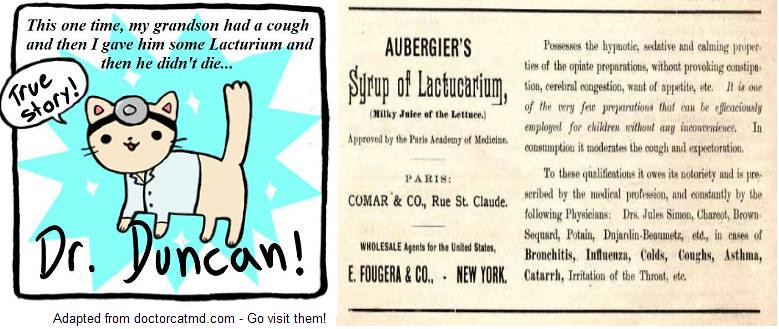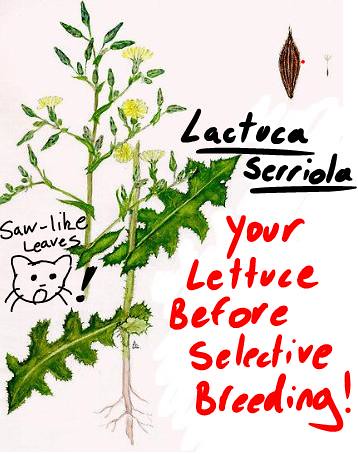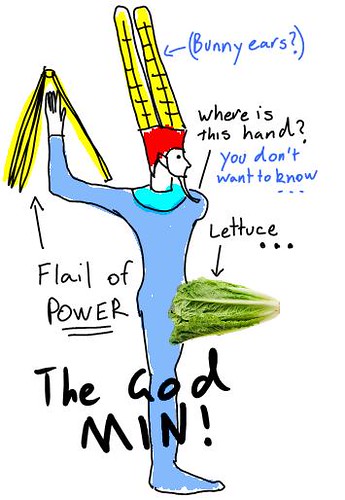... we live on the expectant edge, dear Senator,
rich in milk that flows freely from the world's bitter insults.
Come, take of our gentle opium, refreshing and cool,
which so delighted Emperor Augustus, he built an altar to it.
Ah, here's your Ruby Red.
Nearly always eaten raw and slow to bolt,
see how leisurely she relinquishes each leaf,
each translucent hint of her tender core.
Don't you find she agitates the very air?
Now, the finale, as one frilled fan flies after another, until
a single leaf remains, its blushed rim rippling,
and then that too, like an eyelid waking,
slips away.
“Dance of the Lettuce Fan”
Well, now we all know what the ancient Egyptians thought of it, but what about the other supposed properties of lettuce? In ancient times lettuce was a prized medical herb. The ancient Romans and Greeks took lettuce to aid sleep and relieve pain; Emperor Augustus hailed it for restoring his health. This medical view of lettuce followed it through to medieval times. It was even an ingredient in “Dwale” (a herbal anaesthetic of the 12th - 15th century), along with hemlock, mandrake and opium...

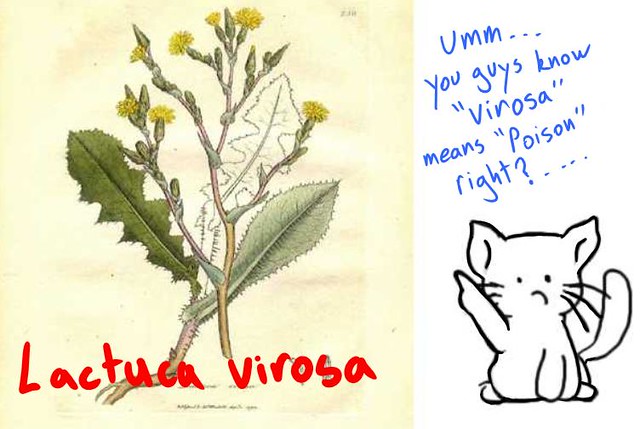
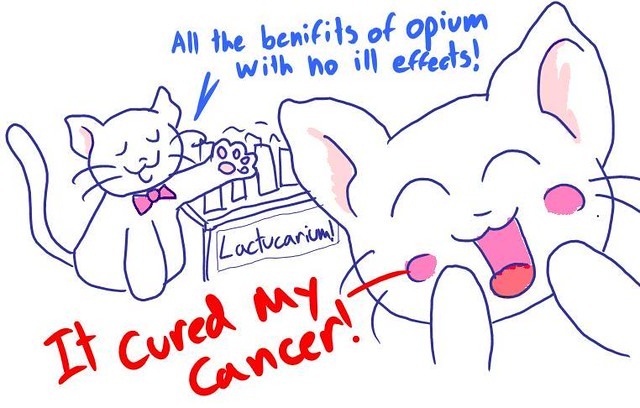



However, dramatic changes in medical thinking during the 18th century left lettuce forgotten by the wayside. Until 1810 when Dr. Andrew Duncan of Edinburgh started raving about it. Dr. Duncan described a method of preparing dried lettuce sap for medical use, calling the resulting product “Lactucarium”. It was soon commercially produced and available throughout Europe and America.
Although Dr. Duncan's first preparations were made from L. sativa growing in his vegetable garden, commercial Lactucarium was mainly produced from the extra sappy Lactuca virosa (an ancestor of cultivated lettuce).

The drug was acclaimed as an opium substitute, though somewhat weaker, but without the ill effects. It was commonly called “Lettuce Opium” and used to treat everything from a dry throat to heart disease.

This continued for awhile until people started becoming skeptical of its effectiveness (presumably when it indeed did not cure cancer after all). Overwhelming evidence suggesting commercial Lactucarium was ineffectual lead to its omittance from the British Pharmacopoeia in 1864. Interest in the product was diminishing by the end of the 1800's, however it was still commercially produced and recommend into the early 20th century.
Modern research shows that while lettuce sap contains a pile analgesic and sedative compounds, none of these have been shown to persist in the commercial preparation of Lactucarium.
For one thing, many of the compounds are unstable in sunlight, much like vampires...
So although fresh lettuce sap may have some medical properties, commercial Lactucarium had essentially none. We were pretty much recommending a hyped up placebo for almost a century... well done us! I for one am glad modern medicine has learnt from this...
________________________________________________________________
Post Script Bonus: The Bitter Truth!
Many of the medical compounds found in lettuce are what gives them their bitter taste.
These bitter compounds are one of lettuce's defenses against things nomming it...

By breeding more palatable lettuce, we have essential bred out its medical properties.
So your salad isn't overly likely to knock you out, but that is no reason not to use your new found knowledge as an excuse for a nap :)

_________________________________________________________________
Trawling through communications between scientists and medical practitioners of the 1800s is much fun, I suggest you all go do it sometime!
Recommended readings in BOLD!!!
Dr. Duncan raving on:
Other Medical History:
- Crellin, J.K. And Philpott, J. (1989) Herbal Medicine Past and Present Volume II: a referance guide to medical plants. Duke University Press, London. [link]
- Garrod (1864) Dr. Garrod's Lectures on the British Pharmacopœia British Medical Journal February 27th: 237-241 [link]
- J. Churchill (1843) Provincial Medical and Surgical Journal. Provincial Medical and Surgical Association [link]
- Neligan, J.M. and MacNamara, R. (1864) Medicines, their uses and mode of administration: including a complete conspectus of the British Pharmacopoeias, an account of all the new remedies, and an appendix of formulae. Fannin & Co. [link]
- Voigts LE, Hudson RP. A drynke called dwale: a surgical anaesthetic from late medieval England. In: Campbell S, Hall B, Klausner D, editors. . Health, disease and healing in medieval culture. New York: St Martin's Press; 1992. pp. 34–56. [link]
Chemistry related:
- Bischoff, T. A., Kelley, C. J., Yarchesy, K., Laurantos, M., Nguyen-Dinh, P. and Arefi, A.G. (2004) Antimalarial activity of Lactucin and Lactucopicrin: sesquiterpene lactones isolated from Cichorium intybus L. Journal of Ethnopharmacology, 95: 455-457
- Gromek, D., Kisiel, W., Kłodzinska, A., Chojnacka-Wojcik, E., (1992). Biologically active preparations from Lactuca virosa L. Phytotherapy Research 6, 285–287.
- Wesolowskaa, A., Nikiforuka, A., Michalskab, K. Kisielb, W. and Chojnacka-Wojcika, E. (2006). Analgesic and sedative activities of lactucin and somelactucin-like guaianolides in mice. Journal of Ethnopharmacology, 107: 254-258
Nomming!:
Agrawal, A.A. and Konno, K. (2009) Latex: A Model for Understanding Mechanisms, Ecology, and Evolution of Plant Defense Against Herbivory. Annual Review of Ecology, Evolution, and Systematics. 40: 311-331 [link]
And of course:
Potter, B. (1909) The Tale of the Flopsy Bunnies. Frederick Warne & Co, London. [link]
